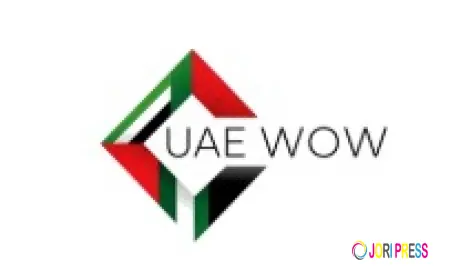India Microfinance Market 2031: Top Players & Forecast
One of the primary drivers of the India Microfinance Market is the strong push for financial inclusion by the Indian government.

The Indian microfinance sector has become one of the most dynamic pillars in the country’s financial ecosystem, providing critical access to credit and financial services for low-income and underserved segments of the population. According to TechSci Research, the India Microfinance Market was valued at USD 7.72 billion in 2025 and is expected to grow robustly to USD 13.78 billion by 2031, reflecting a CAGR of 10.20% during the forecast period. This substantial growth is driven by a confluence of supportive regulatory reforms, digital transformation, economic expansion, and a sharp increase in financial literacy and inclusion efforts.
Emerging Trends in India Microfinance Market
India’s microfinance landscape is undergoing a transformation powered by digital integration and innovative lending models. One of the most significant trends is the increasing digitization of microfinance operations. Fintech collaborations and mobile-based financial platforms are streamlining credit assessments, enhancing customer onboarding processes, and enabling efficient loan disbursals. The deployment of AI-driven credit scoring systems has made it possible to assess creditworthiness without conventional documentation, thus broadening access to finance.
Another notable trend is the rise of purpose-driven lending. Microfinance institutions are now tailoring loan products to specific socio-economic goals such as women’s entrepreneurship, green energy solutions, education financing, and micro-enterprise development. This shift toward specialized lending is creating stronger community impact and improving repayment rates.
Furthermore, the integration of ESG (Environmental, Social, and Governance) principles into microfinance operations is gaining traction. Investors and MFIs are focusing more on sustainable practices, transparency, and social empowerment, reshaping the industry’s future ethos. Community-based lending models and self-help groups (SHGs) continue to thrive, blending traditional grassroots approaches with tech-enhanced efficiencies.
Download Free Sample Report: https://www.techsciresearch.com/sample-report.aspx?cid=3210
Key Drivers of Growth
1. Financial Inclusion Initiatives
Government programs like the Pradhan Mantri Jan Dhan Yojana (PMJDY), Digital India Mission, and MUDRA Yojana have paved the way for deeper financial inclusion. These initiatives have enabled millions of previously unbanked individuals to access formal credit, savings, and insurance products.
2. Regulatory Oversight
The Reserve Bank of India’s clear and robust regulatory framework since 2011 has brought standardization and credibility to the microfinance sector. The adoption of uniform norms across MFIs, NBFCs, and small finance banks has enhanced transparency, reduced over-indebtedness, and boosted investor confidence.
3. Urbanization and Income Growth
India’s rising urban population and increasing per capita income have expanded the consumer base for microfinance. Urban migration is also creating new financial needs in peri-urban and semi-urban pockets, fostering demand for customized microfinance products.
4. Fintech Innovation
The rapid evolution of India’s fintech ecosystem has revolutionized microfinance delivery. From mobile apps to biometric authentication and real-time credit scoring, technology is making financial services more accessible, especially in remote regions.
5. Empowerment of Women
A large share of microfinance loans are disbursed to women borrowers, empowering them economically and socially. Women-led microenterprises are emerging as key contributors to household income, particularly in rural areas.
Industry Key Highlights
- India’s gross microfinance loan portfolio grew from ₹17,000 crore in 2012 to over ₹3.93 lakh crore in 2024.
- The sector now contributes approximately 2.03% to the country’s Gross Value Added (GVA).
- Over 1.3 crore jobs are supported directly or indirectly by the microfinance ecosystem.
- The market serves nearly 8 crore borrowers across more than 700 districts.
- The southern region, especially Tamil Nadu and Karnataka, leads in terms of loan penetration and borrower base.
- Increasing preference for digital repayment channels has improved collection efficiency.
- SHGs and community-led financing structures continue to thrive under NGO and government partnerships.
Competitive Analysis
India’s microfinance sector is characterized by a healthy mix of traditional players and new-age fintech-driven NBFCs. Key players include:
- Ujjivan Financial Services Limited – Known for its robust urban presence and diversified portfolio.
- Asmitha Microfin Ltd. – Focused on grassroots-level community lending.
- Utkarsh Small Finance Bank – Offers a blend of microfinance and retail banking.
- CreditAccess Grameen Ltd. – One of the largest MFIs with pan-India operations.
- Spandana Sphoorty Financial Ltd. – Focuses on semi-urban and rural microfinance.
- Muthoot Microfin Ltd. – Strong rural reach, backed by a trusted financial brand.
- Bharat Financial Inclusion Ltd. (formerly SKS Microfinance) – Pioneers in microcredit.
- Databases of emerging fintech-backed NBFCs – Offer seamless digital loan processing.
Most institutions are investing in technology, expanding product portfolios, and enhancing last-mile connectivity to maintain competitiveness.
Regional Performance
The Southern Region remains the fastest-growing market due to strong infrastructure, banking penetration, and high levels of financial literacy. States like Tamil Nadu, Karnataka, Telangana, and Andhra Pradesh are at the forefront of adoption.
Eastern and North-Eastern states, including Bihar, Odisha, and Assam, are also showing increased uptake due to government and NGO-led financial inclusion programs.
Western India, particularly Maharashtra and Gujarat, benefits from entrepreneurial activity and MSME-driven credit demand.
Future Outlook
The India Microfinance Market is poised for continued expansion, driven by:
- Greater fintech adoption in micro-lending
- Expansion of SHGs and women's self-help programs
- New lending models like Buy Now, Pay Later (BNPL) for micro-consumers
- Deepening penetration into underserved geographies
- Development of micro-insurance and micro-savings products
- Potential for green lending in rural areas for solar energy, clean cooking, etc.
The market is expected to remain resilient, with increasing institutional funding, supportive regulations, and innovative outreach mechanisms helping mitigate credit risk and boost scalability.
10 Benefits of the Research Report
- Comprehensive market size estimation from 2021 to 2031
- In-depth analysis of provider types: NBFCs, banks, fintech, etc.
- Regional segmentation with growth forecasts
- Insights into government policies shaping the sector
- Competitive landscape with company profiles and strategies
- Emerging trends and technological innovations highlighted
- Detailed analysis of key market drivers and restraints
- Future opportunities and investment outlook
- User-friendly charts, figures, and market data for easy understanding
- Support for strategic planning, market entry, and expansion decisions
Conclusion
India’s microfinance sector stands at a pivotal juncture. With over 8 crore lives directly touched, its role in driving inclusive growth and economic empowerment is more critical than ever. As technology continues to revolutionize access, and regulatory frameworks become more enabling, the sector is expected to expand its reach and impact substantially. A strong emphasis on customer-centric models, financial education, and ethical lending will be key to sustaining long-term growth.
As India marches toward a digitally inclusive economy, microfinance will continue to serve as the bridge between aspiration and opportunity, empowering individuals and small businesses to chart a more secure and prosperous future.
Contact Us-
Mr. Ken Mathews
708 Third Avenue,
Manhattan, NY,
New York – 10017
Tel: +1-646-360-1656
Email: [email protected]
Website: www.techsciresearch.com
What's Your Reaction?
 Like
0
Like
0
 Dislike
0
Dislike
0
 Love
0
Love
0
 Funny
0
Funny
0
 Angry
0
Angry
0
 Sad
0
Sad
0
 Wow
0
Wow
0





















































